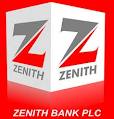When in 2004, the CBN asked Nigerian banks to put in place a management succession plan, many banks did not take it seriously. Zenith Bank in its usual proactive approach to banking put in place a team of high caliber managers. One of the managers is Godwin Emefiele who took over from the pioneer Managing Director, Mr Jim Ovia an acclaimed banker.
Three year after taking over as managing director of the bank, Emefiele has steered the ship to higher levels that Zenith has continued to fly in high colours. A survey report conducted by HSBC global research on sub-Saharan African banks has adjudged Zenith bank Plc as the best managed bank in Nigeria for its good quality asset and for being least sensitive to increase in cost of savings accounts.
According to the research report which covered four Nigerian banks namely First Bank, GTBank, United Bank for Africa and Zenith bank,Zenith bank’s low upside risk to non performing loans charges provide it more room for earnings growth in the 2013 financial year with additional 8 per cent on its pre-tax basis. The report rated Zenith bank high in non interest income among the four banks covered. Zenith Bank Plc, the report said, generated N46 billion from commission on turn over COT, in 2010, N57 billion in 2011, N55 billion in 2012 and N43 billion is expected in 2013. COT fees make up the bulk of fee income of Nigerian banks, especially at FBN.
According to HSBC, in 2010, First Bank earned N34 billion from commission on turn over COT. This rose to N39 billion in 2011, N48 billion in 2012 and is estimated to drop to N33 billion in 2013 and further to N24 billion in 2014 and N14 billion in 2015. Gtbank the report said earned N36 billion as revenue from fees in 2010, N35 billion in 2011, N37billion in 2012, N25billion in 2013, N18 billion in 2013 and N10billion is the expected revenue from COT in 2014.
According to the report, UBA in 2010 generated N27 billion from COT, N31 billion in 2011, N35 billion in 2012, N23 billion in 2013 and N18 billion in 2014.
HSBC said “Interest rate environment is favourable for Zenith’s net income margin (NIM). We raise our target price to N24 from N23 on positive earnings revisions and upgrade the stock to overweight (OW) from neutral,” the report indicated.
Looking at the investment prospects, the report observed that tighter regulation of fees and cost of savings accounts since the first quarter of this year and cyclical increase in cost of risk may have set the stage for multi-year compression of the banking sector’s return on equity in Nigeria.
The report also noted that the pressure to improve operating costs so as to preserve returns is getting stronger, while large fixed cost base should limit the gains, with expectation of a more disciplined loan pricing policy.
In this respect the HSBC report said “Our favoured play is Zenith Bank (OW, TP N24). It is least sensitive to rising cost of savings accounts, can hold its net income margin NIM, better than competitors, delivers better cost control and asset quality”.
The HSBC global research predicts that Nigerian banks will be more disciplined on loan pricing as a result of reduction in fee income, while also reflecting on the increased loan spread assumptions for the banks under coverage.The recent contraction in the combined market capitalization of the banks, occasioned by the regulations amounted to about N220 billion ($1.3 billion), which according to the report, compares with the potential income fee loss of N88 billion ($546 million) through to 2016, with the increase in cost of funds of N22 billion ($136 million). However, a N220 billion [$1.3 billion] drop in market capitalization does not look adequate if one includes the cost of rising loan provision expenses, which bottomed in 2012 on loan portfolio de-risking.
We estimate banks will need to increase them by a cumulative N76 billion ($471 billion), and if normalizing for the large 11 percent over due but not impaired loan book of FBN (UW,TP N16), the sector cumulative provision expenses goes up to N257 billion ($1.59 billion). HSBC said “Our re-examination of the cost structure of the banks we cover suggests that UBA and Zenith were the two banks which made the strongest progress in controlling cost. This can be seen in an improvement in headcount per branch numbers in the case of Zenith and in the cost of income ratios of both banks.”

